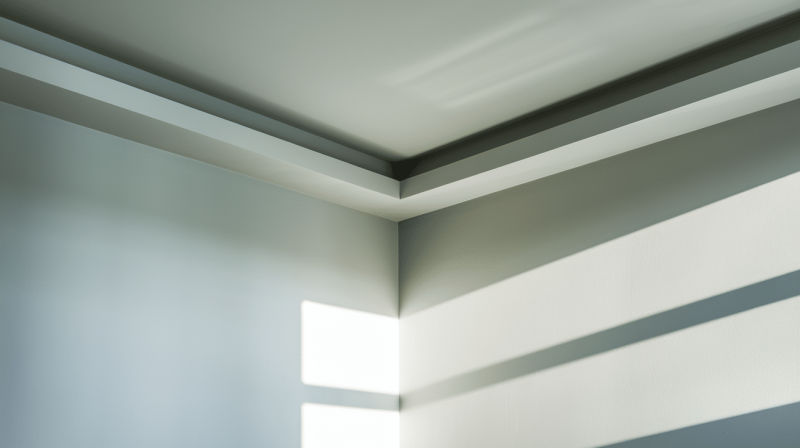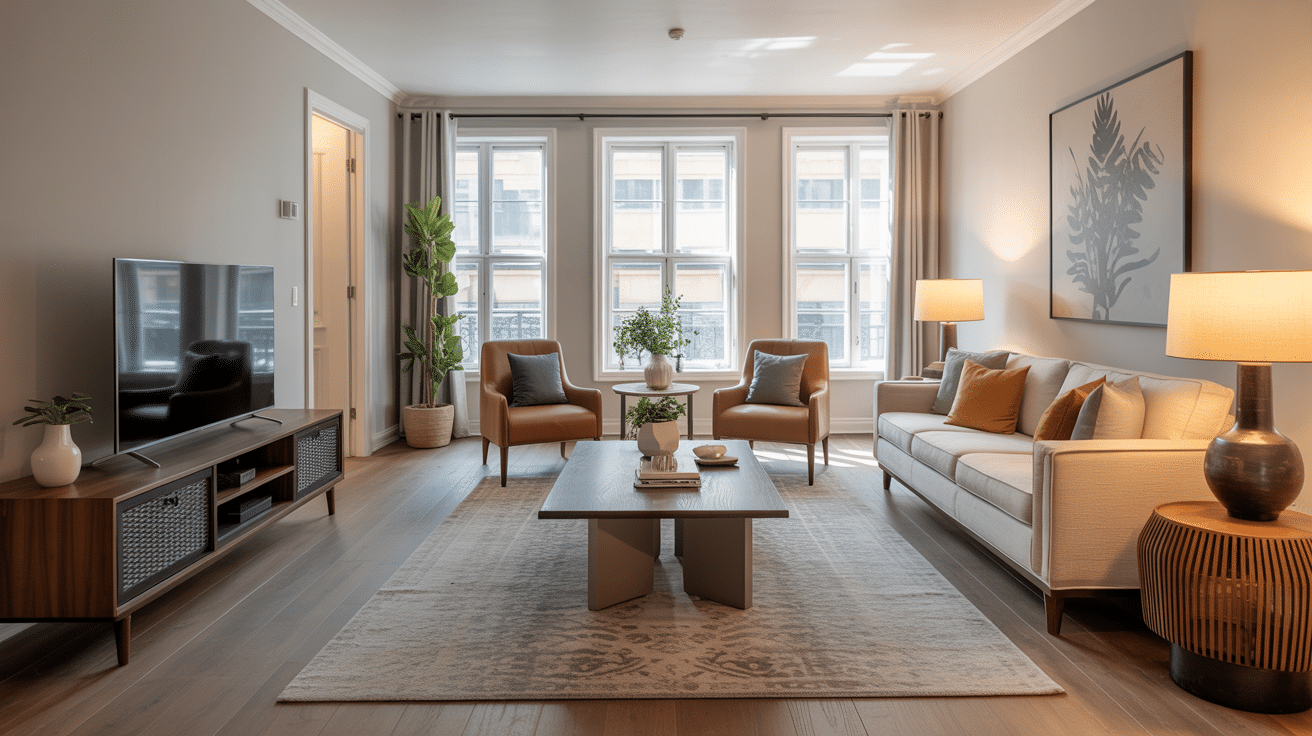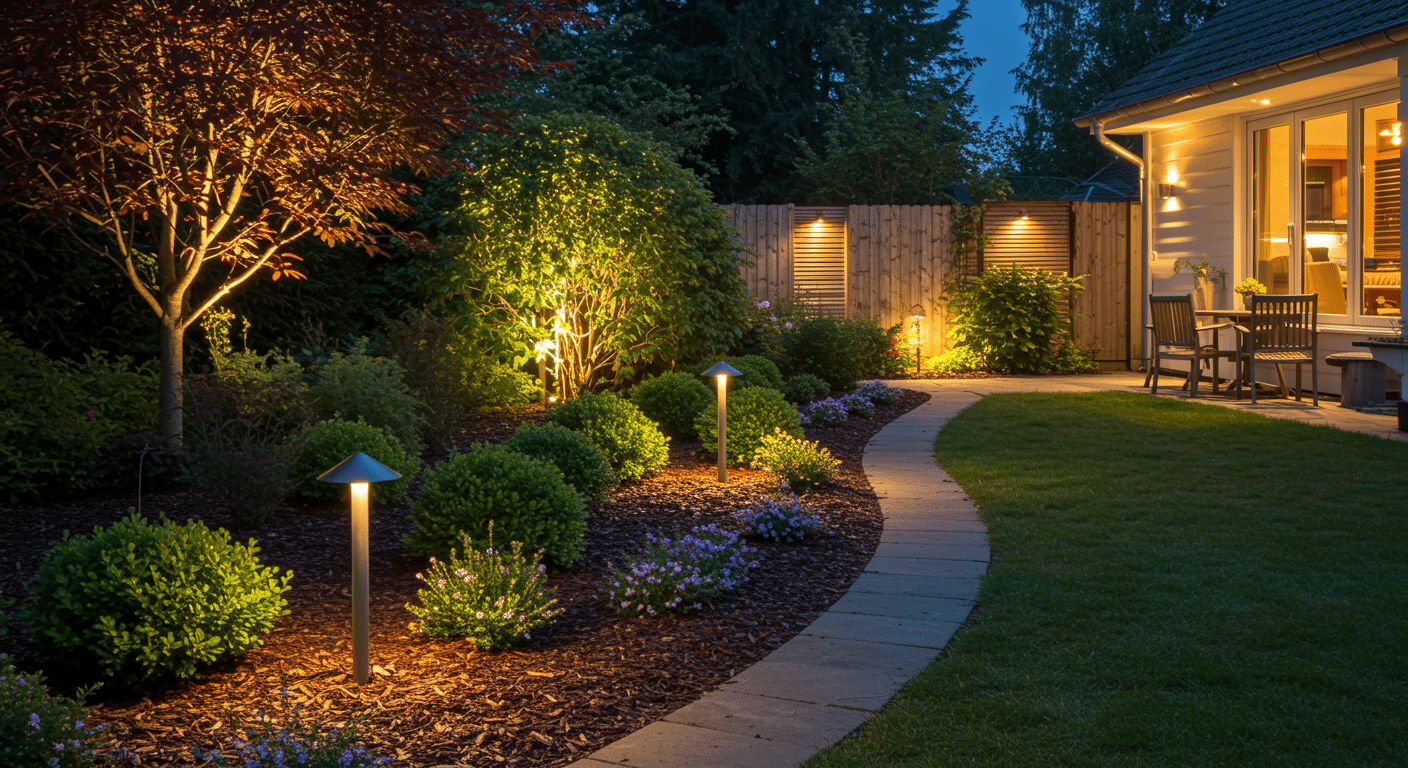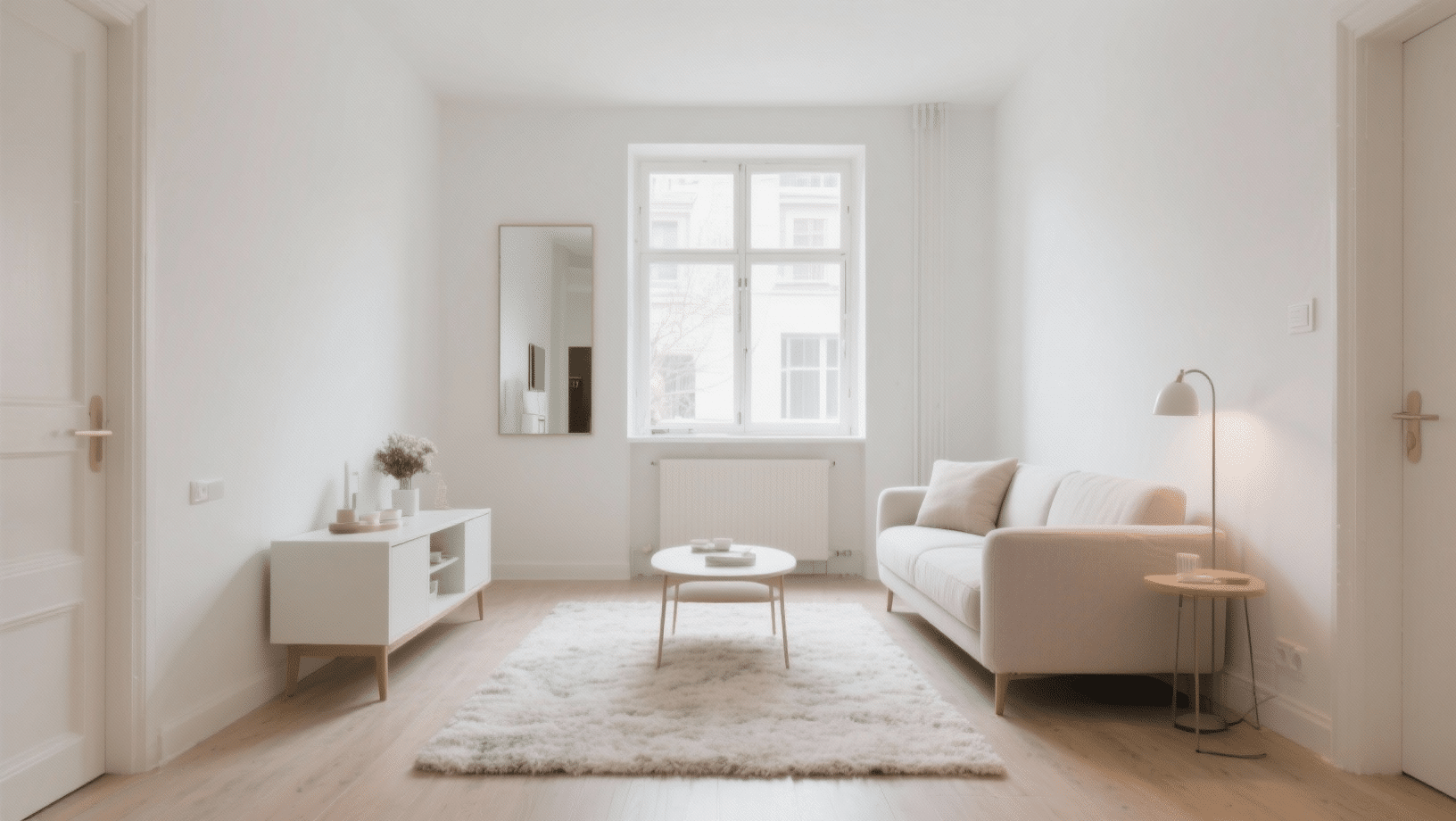Have you ever walked into a room and felt something was off, but couldn’t put your finger on it?
The white ceiling seemed to float above my sage green walls like a bright cloud that didn’t belong. That’s when I started wondering – what if I painted my ceiling the same color as my walls?
This design choice can completely change how a room feels. It might make your space feel cozy and intimate. Some rooms benefit from this approach, while others don’t.
Let me walk you through the real pros and cons of painting ceiling same color as walls, so we can decide if this bold move is right for our home.
What to Know Before Same-Colour Painting Your Ceiling and Wall?

Before we begin painting, there are several important factors to consider. Choosing the right paint isn’t always easy, and a wrong choice can completely change, or even ruin, the look of a room.
That’s why it’s crucial to consider these key points carefully. Here are the main factors to look for before you begin:
- Room Size & Ceiling Height: Low ceilings can feel cramped with dark colors, while high ceilings benefit from color continuity that brings them down to a more comfortable scale.
- Lighting Conditions: Natural light from windows and your artificial lighting setup will dramatically change how the color appears throughout the day.
- Paint Finish and Texture: Matte finishes create depth and hide imperfections, while satin or semi-gloss can make ceiling flaws more visible.
- Color Choice and Mood: Darker shades absorb light and create intimacy, while lighter tones keep spaces feeling open and airy.
- Architectural Features: Crown molding, exposed beams, or sloped ceilings add complexity that affects how the unified color scheme will look.
Understanding the Pros and Cons of Painting Ceiling Same Color as Walls
Now that we’ve covered the key factors to consider, let’s look at the real advantages and drawbacks of this design choice. Learning the pros and cons of painting ceiling same color as walls will help us decide if it’s the right move for our space.
| Pros | Cons |
|---|---|
| Seamless Look: Creates visual unity throughout the room. | Smaller Feel: Can make rooms seem more enclosed. |
| Expands Space: Removes visual breaks to enlarge small rooms. | Monotonous: Lack of contrast may make the space dull. |
| Simplifies Choices: Easier, faster painting with fewer colors. | Heavy Impact: Dark colors on all surfaces can feel overwhelming. |
| Modern Style: Perfect for minimalist and cohesive designs. | Hides Details: Architectural features may get lost. |
| Color Harmony: Avoids clashing paint undertones. | Harder Maintenance: Touch-ups and repainting can be tricky. |
| Better Lighting: Reflects light evenly in dim rooms. | Flaws Show: Ceiling imperfections become more visible. |
| Cozy Atmosphere: Dark tones create a sense of intimacy in large spaces. | Less Interest: Harder to create distinct zones or focal points. |
| Versatile: Works well with both subtle and bold colors. | More Paint: Requires extra paint and effort. |
Essential Tips for Painting Walls and Ceilings Alike
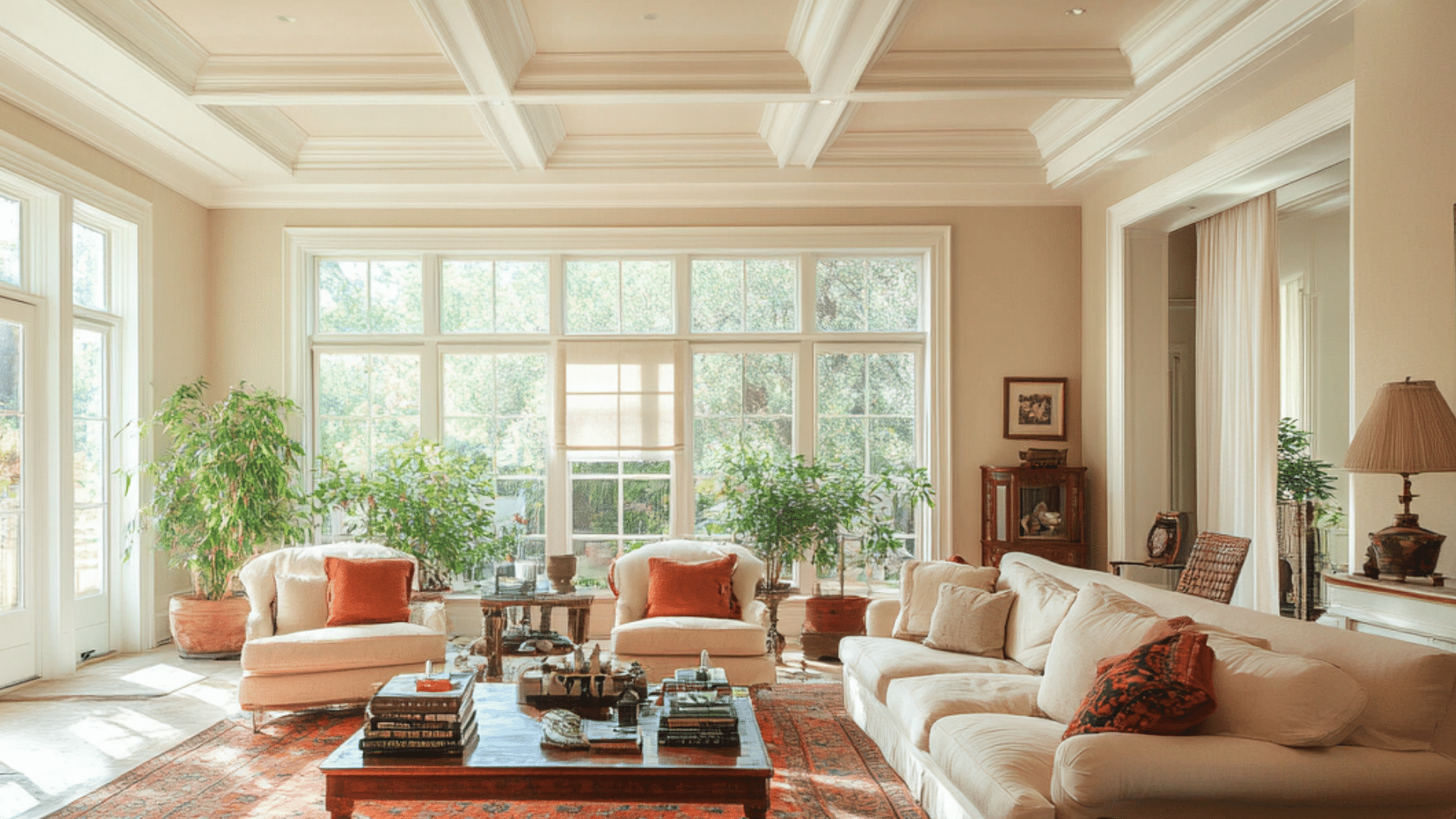
Even the best color choice won’t save a poorly executed paint job. The technique matters as much as the color selection, especially when painting both surfaces the same shade. This same-colour painting approach requires careful attention to detail.
These practical tips will help achieve that smooth, professional finish that makes the whole room look polished. Following this guide will ensure the enhanced visual continuity you’re seeking.
They’ve been especially helpful for those weighing the pros and cons of painting ceiling same color as walls, and have saved many homeowners from costly mistakes:
- Choose soft, muted shades to prevent overwhelming the space: Bold colors can work, but softer tones like dusty blues or warm grays are more forgiving and livable long-term.
- Test the color on a sample area before committing: Paint large swatches on both the wall and the ceiling. Live with them for at least a week to see how they look in various lighting conditions.
- Use quality lighting to evaluate the result during different times of day: Natural morning light shows colors differently than evening artificial light.
- Balance the space with contrasting trim, furniture, or floors: White trim or natural wood elements prevent the room from feeling too monochromatic.
What Paint Finish Works Best for Ceilings?
The paint finish can make or break the entire look, even when using the perfect color. Different finishes reflect light differently and can either hide imperfections or highlight every flaw.
Getting this choice right is just as important as picking the right shade. Here’s what works best for ceiling applications:
- Flat/Matte Finish: The go-to choice for most ceilings. Hides imperfections well and doesn’t reflect light harshly. Creates a soft, uniform appearance that’s easy on the eyes.
- Eggshell Finish: Offers slight durability over flat paint while still minimizing glare. Works well in bedrooms and living areas where some washability is needed without too much shine.
- Satin Finish: Provides more durability and easier cleaning but can highlight ceiling flaws. Best reserved for perfectly smooth ceilings or rooms with high humidity like bathrooms.
- Semi-Gloss: Rarely recommended for ceilings unless there’s a specific moisture concern. The shine can be distracting and shows every imperfection.
- High-Gloss: Generally avoided on ceilings due to harsh light reflection and emphasis on surface flaws. Creates an uncomfortable glare in most living spaces.
Choosing the Perfect Paint Color Combinations for Ceiling and Walls
Finding the right balance between ceiling and wall colors can make or break the room’s atmosphere. The lack of contrast with color drenching can sometimes feel overwhelming, so understanding your options is crucial.
The key is understanding how different combinations affect the space’s visual weight and height. Let me walk through three approaches that consistently deliver great results.
Dark Walls with Light Ceiling
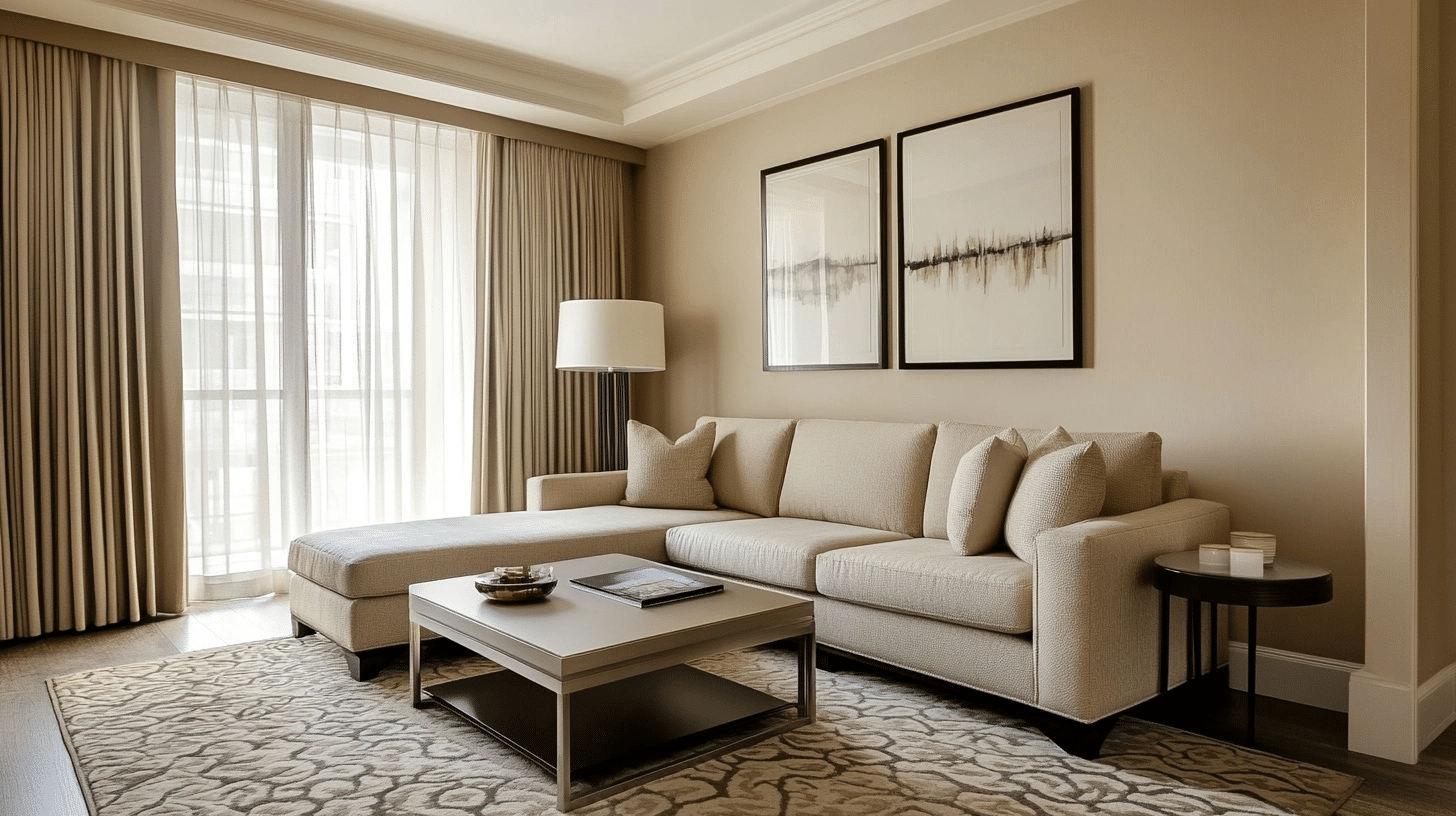
This classic combination creates a grounded feeling while keeping the room from feeling cramped. The dark walls provide richness and warmth, while the lighter ceiling reflects natural light back down into the space and helps rooms feel bigger.
This approach works particularly well in rooms with lower ceilings, as the bright overhead surface helps maintain an open, airy feeling despite the darker walls.
Light Walls with Dark Ceiling
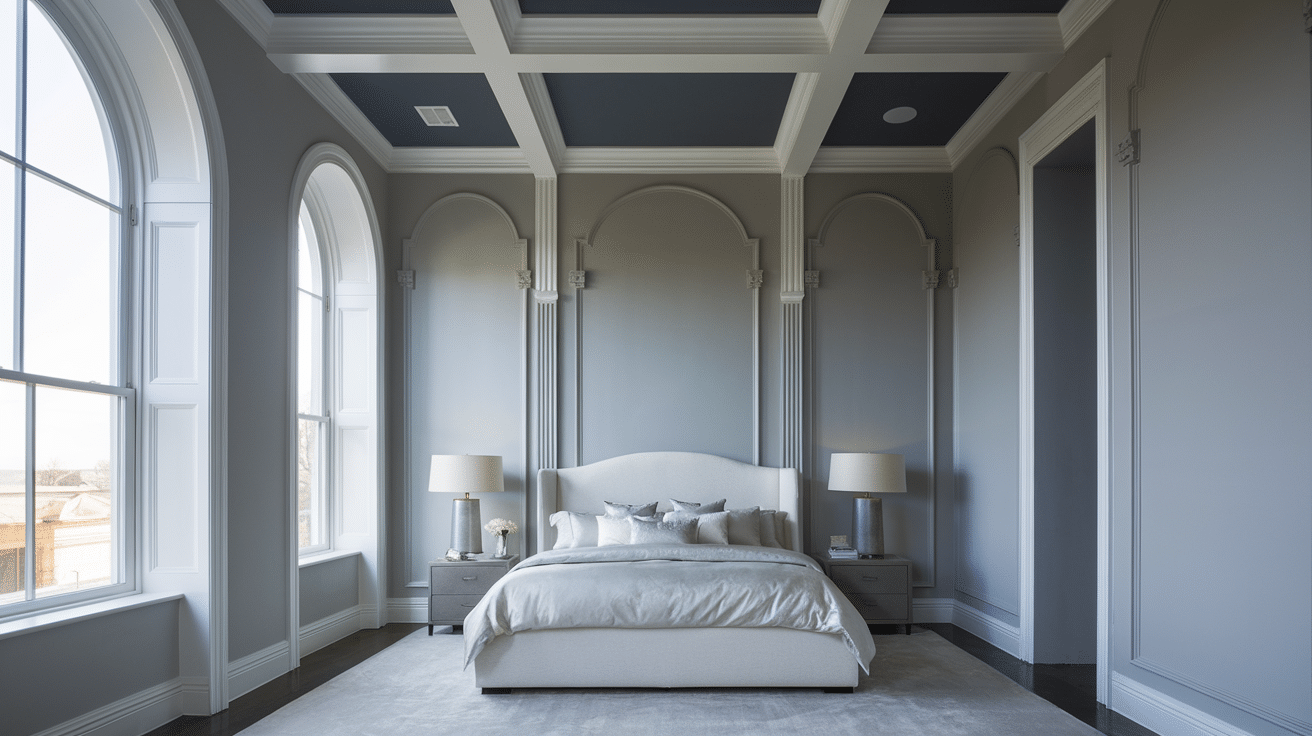
For those wanting to add drama and visual interest, this bold approach delivers impressive results. The dark ceiling creates depth and can make a large room feel more intimate and cozy, though it may make some spaces feel smaller.
This technique works best in rooms with high ceilings and ample natural light, as the bright walls help balance the darker overhead elements and prevent the space from feeling too heavy.
Same Color with Different Finish
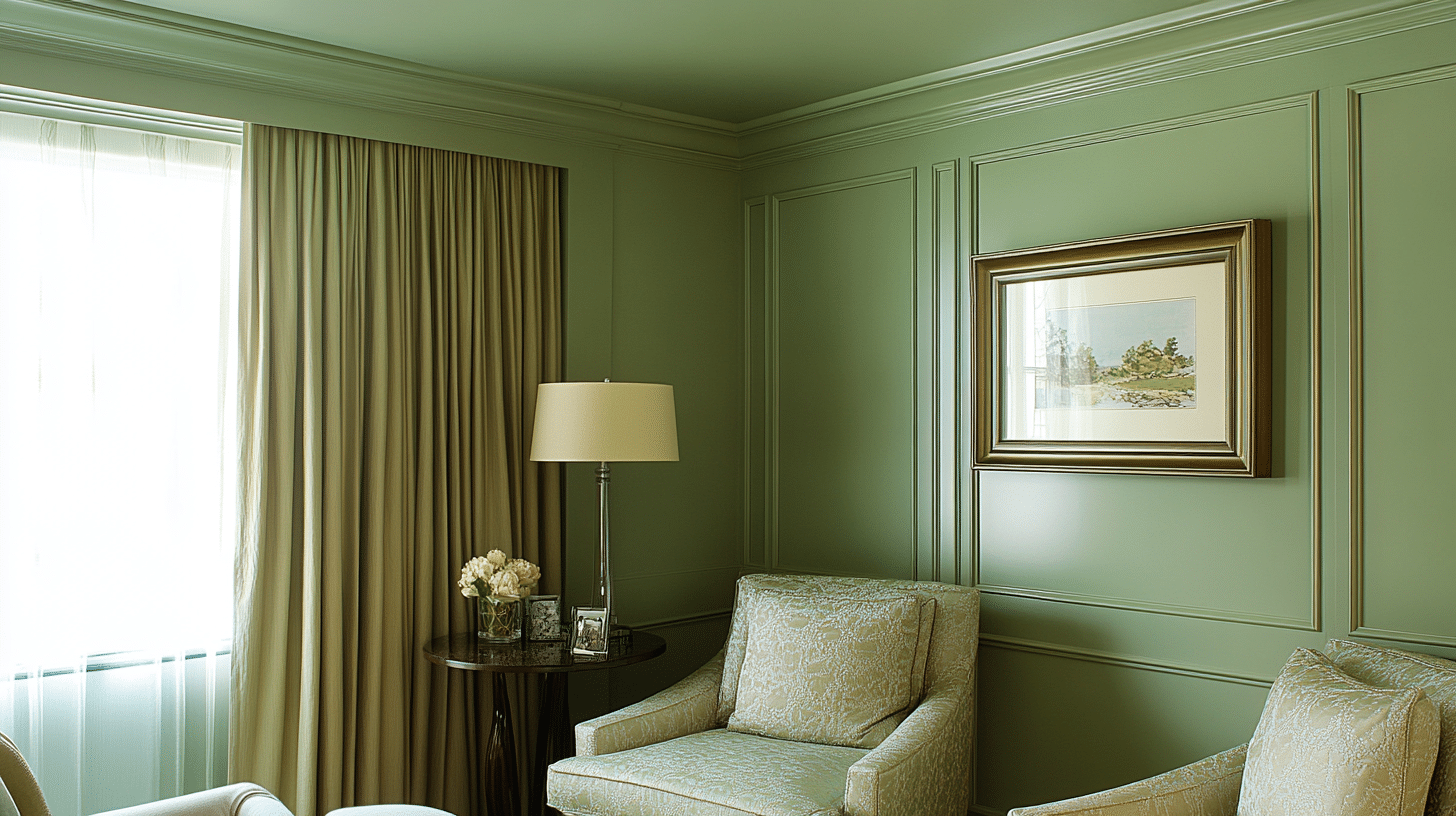
Sometimes the most subtle approach creates the most refined look. Using the same color in different finishes adds gentle variation without creating stark contrast. This colour painting technique offers the perfect matching solution.
This technique works beautifully when wanting color continuity while still maintaining visual interest through texture differences.
Perfect Paint Colors for Ceiling Painting Same Colour as Walls
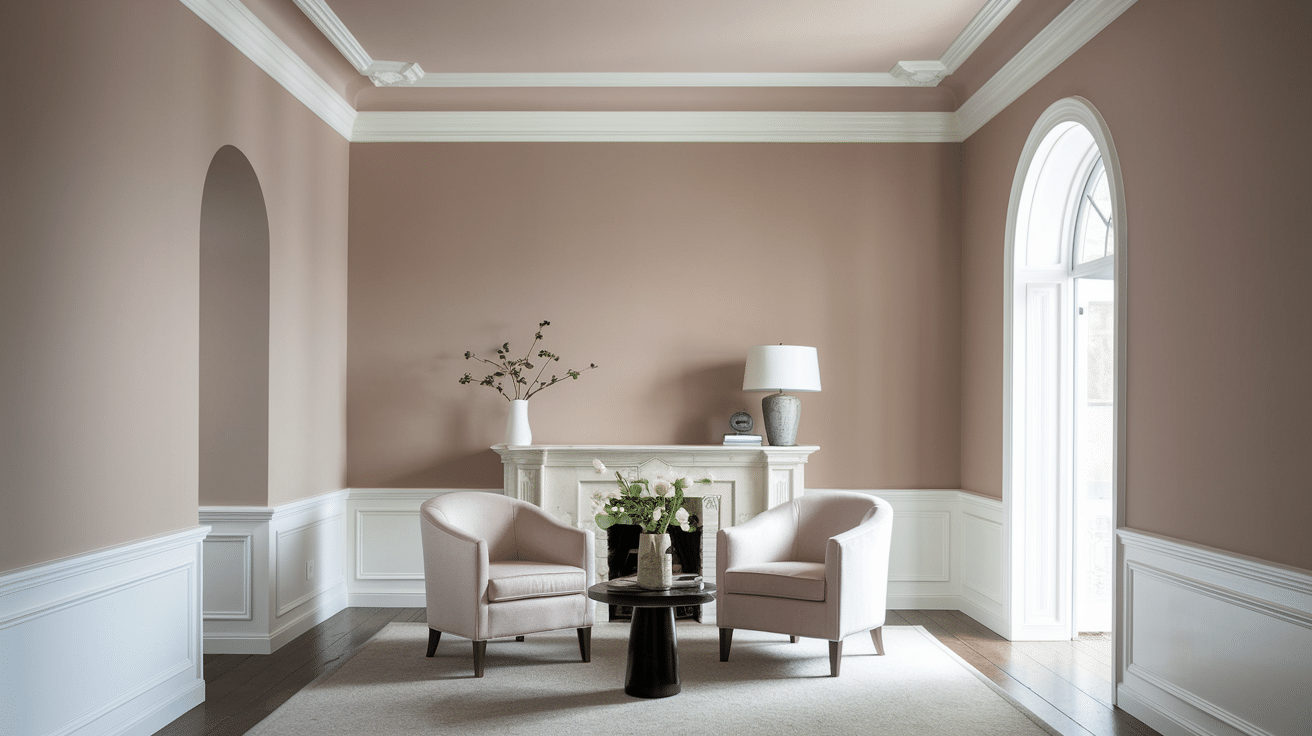
Not all colors work equally well when applied to both walls and ceilings. Some shades create a cohesive, polished look, while others can make a room feel overwhelming or cave-like.
After testing various options in different spaces and considering the pros and cons of painting ceiling same color as walls, here are the colors that consistently deliver beautiful results:
- Soft White or Warm Beige creates a timeless and bright atmosphere that works in any room. These neutral tones reflect light beautifully, making spaces feel larger and more open.
- Greige or Light Gray offers a modern and versatile foundation that pairs well with both warm and cool accents. These chic neutrals add depth without overwhelming the space.
- Dusty Blue or Pale Sage brings a calming quality that works perfectly in bedrooms or bathrooms. These gentle hues create a spa-like atmosphere while maintaining visual interest.
- Charcoal or Navy makes a cozy, sleek choice for large, well-lit rooms. These darker tones add drama and intimacy when paired with ample natural light.
- Earthy Terracotta or Clay adds warmth and personality to any space, creating a grounding effect that feels both modern and timeless.
Final Verdict
Painting the ceiling the same color as the walls can be a bold yet refined choice, but it’s not a one-size-fits-all approach. Understanding the pros and cons of painting ceiling same color as walls is key.
Consider the space’s natural light, ceiling height, and intended atmosphere before making this commitment. Test the color in a small area first.
Have you tried this technique in your home, or are you considering it for an upcoming project?
Share your experiences in the comments below; I’d love to hear from you.


